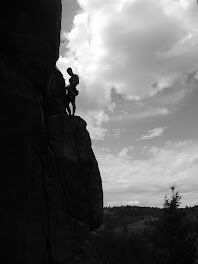What I am working on right now:
What Second Life is and is not
Second Life is a virtual world that allows participants to develop, build, and engage in activities with others. Second Life is not a themed game centered on a specific goal or outcome. It is what the individual participant makes or creates. However, the environment of Second Life as a virtual world that allows for already created virtual games, role-play, and social activities that anyone can join.
Using the tools available in Second Life, some creative thinking and a great deal of work an educator can develop an immersive learning environment. Thinking creatively role-play scenarios can be created, other experiences, and group activities that can contribute to and enhance a student’s learning. Second Life does not provide a template for content management however; content management systems such as Merlot and, according to John Baker CEO of D2L, D2L can also be interfaced with Second Life. Second Life allows for an individual to establish a group based upon personal interests and to network with others who share those interests.
While in Second Life I have observed presentations that realistically guided me through a cancer patient’s emotions and experiences from diagnoses, treatment of and recovery from cancer. It was incredibly moving and would be an excellent experience for students in the health care industry. I have observed motors replicated with an excellent presentation from the instructor, and a math presentation that interfaces with the internet and teaching tools available on the web.
I think the fatal error that some universities and businesses are making in Second Life right now is to not make the distinction between what they are in “real life” and what they can be in Second Life. I have observed that replicating your current campus environment in Second Life may seem to be logical for marketing and providing student tours, but replicating classrooms for traditional lectures does not necessarily make sense. In other words, students are not going to be engaged with or see the logic in entering second life to do what they can do in real life. I have learned little things through navigating an avatar around Second Life that may not bother students who play video games that bothered me such as opening doors and going up and down stairs. Having a lot of things such as plants, vases, furniture, around a site makes sense to us as people but are difficult for an avatar to maneuver around. Bottom line chances are students are at your university to learn and if these things get in the way of or interfere with the learning process students will find another way to access what they need to know. Building these, as they exist in “real life” for avatars in Second Life doesn’t make sense. I will demonstrate some of these issues in my presentation today.
I have also participated in conferences in Second Life and toured through Virtual Harlem, the Theorist Project, reviewed Cisco’s site, Adobe’s site, and Sun Micro Systems, all amazing sites. The most valuable experience I have gained from being a part of Second Life is the opportunity to meet with people from other countries. I have met people from all over the world and I am now taking advantage of the opportunity to work with them to improve teaching and learning in Second Life.
There is great potential in virtual worlds, not just Second Life, in developing an engaging learning environment that provide students with learning experiences that we can now only imagine. After some discussion with others in the system I would recommend that a ‘virtual worlds” committee be established or EUC be given the responsibility of developing policy and procedure on how the system defines their presence in a virtual world.
Steampunk Adventures back from a real life interruption!
-
Hello everyone, I can’t believe that I have not posted anything here since
June of 2011! So much has happened in the past several months..real life
has ce...
14 years ago



No comments:
Post a Comment